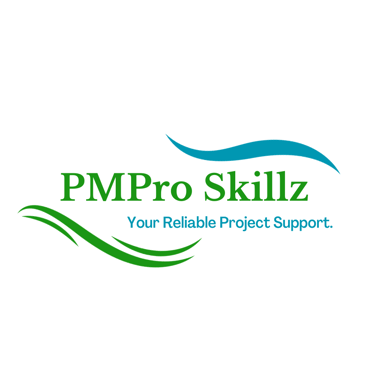Choosing the Right Project Planning Approach: Agile, Traditional, or Hybrid?
In this article, we explore effective project planning through various methodologies: Agile's flexibility, Traditional's structure, and the Hybrid approach. Learn how to align planning with your project's needs for success in today's dynamic business landscape.
Iyanna Trimmingham
9/27/20235 min read


In today's dynamic business landscape, agile practices have gained significant traction, offering flexibility and adaptability in project management, especially when compared to the more structured and sequential nature of traditional project management methods. In spite of this, it is important to recognize that, whether you lean towards agile, traditional, or opt for a more hybrid approach, effective project planning remains a critical cornerstone for the success of all types of projects.
Overview of Project Planning
Project planning is the process of determining how to execute, monitor, and control a project throughout its lifecycle. The planning process defines the project scope, sets goals, and develops the project schedule, resources, and budget required to complete the project successfully. Thorough planning is essential for aligning expectations, coordinating efforts, meeting objectives, and minimizing risks.
The key elements of the project planning process typically include:
Defining the project scope, goals, and deliverables
Identifying project stakeholders
Estimating required resources and budget
Developing a detailed project schedule and timeline
Planning communications and procurement needs
Identifying and assessing risks
Establishing quality standards and metrics
Underestimating the importance of planning is one of the most common causes of project failure. Planning provides a roadmap for implementation and helps anticipate potential issues before they arise. As legendary football coach Vince Lombardi once said: "Plan your work and work your plan."
Traditional Project Management Methodology
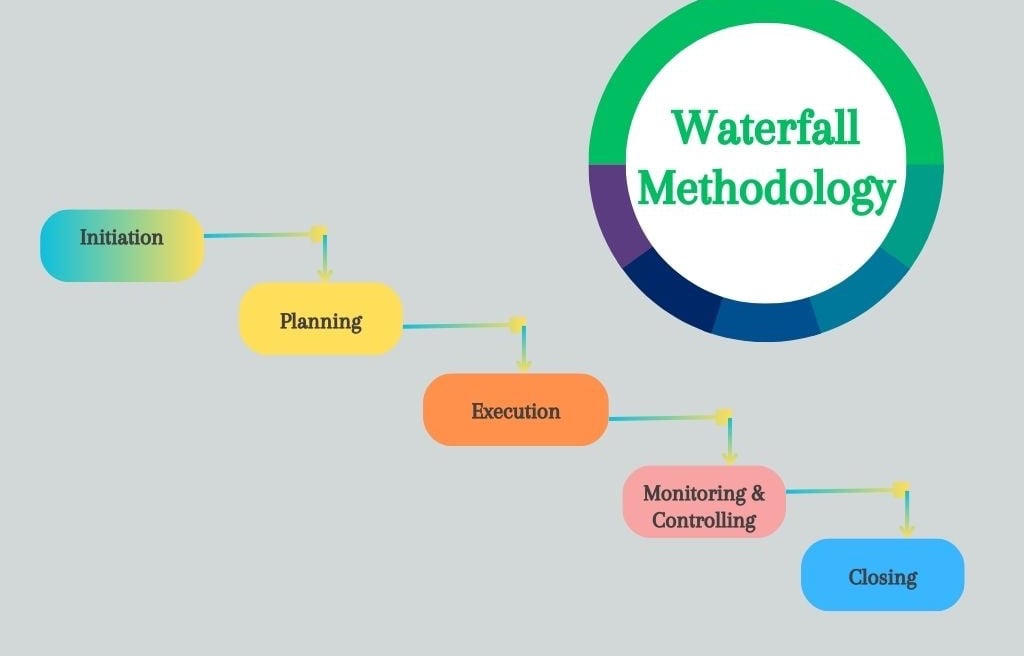

Traditional project management (also known as waterfall methodology) takes a linear, sequential approach to completing projects. This methodology places heavy emphasis on upfront planning before any actual work begins. The traditional approach moves through set phases with distinct start and end points for each stage:
Initiation Phase: The project is formally started, the business case validated, and high-level requirements gathered.
Planning Phase: Detailed project plans are created, including the scope, schedule, resources, costs, quality metrics, risks, and procurement needs.
Execution Phase: The project plan is put into action and the actual work is performed.
Monitoring/Controlling Phase: Progress is tracked to ensure Desired outcomes are being achieved within time, cost, and quality constraints. Adjustments are made as needed.
Closing Phase: The project is formally completed and handed off, the team disbanded, and lessons learned are documented.
With the traditional approach, significant time and effort are invested in project planning upfront before execution begins. Changes after the initial planning stage can be difficult and costly to implement. The extensive planning aims to minimize surprises once the work starts.
Agile Methodology

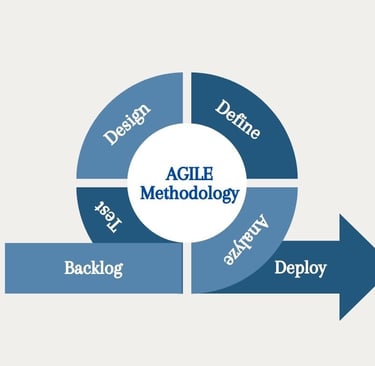
In contrast to traditional project management, agile methodology takes an iterative approach based on incremental delivery and constant collaboration. Agile emphasizes adaptability over rigid planning, welcoming changing requirements even late in the project.
There are various frameworks under the agile umbrella, like Scrum and Kanban, but they share these common characteristics:
Project cycles are broken into short sprints, typically 1-4 weeks long
Focus is on delivering working functionality at the end of each sprint
Just enough planning is done at the start of each sprint to identify the next set of priorities
Progress is continually monitored through daily standups, reviews, and retrospectives
Flexibility to change course is built into the process
Working software is the primary measure of progress
Rather than create detailed specifications upfront, agile builds the product incrementally in a collaborative fashion. With a "fail fast" mentality, problems can be quickly identified and corrected. Agile requires planning, but not nearly as rigid or extensive as with traditional project management. The emphasis is on being nimble and adaptable.
Hybrid Approach
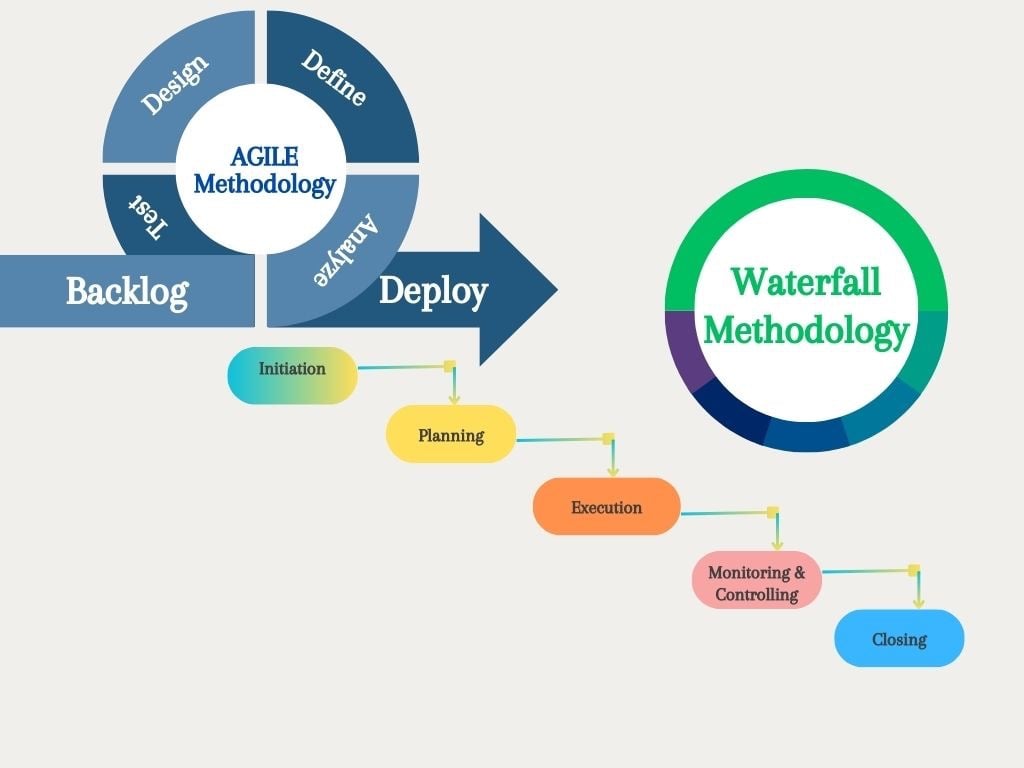

For some projects, neither a strictly traditional nor strictly agile approach may make the most sense. In these cases, organizations may opt for a hybrid methodology combining elements of both.
One popular hybrid model is the agile-waterfall hybrid. With this approach, projects start with a high-level planning and requirements gathering phase like the traditional methodology. Once completed, execution progresses in agile sprints building and refining the deliverables in an iterative fashion.
The hybrid approach aims to get the best of both worlds - the structure and clarity of upfront planning combined with the flexibility and collaboration of agile delivery. The hybrid model allows organizations to tailor the methodology to the unique needs of each project.
Adapting Planning to the Methodology
The amount of emphasis placed on upfront planning versus taking an iterative approach is heavily influenced by the methodology chosen for a project. Here are some tips for aligning planning with the methodology:
Traditional Projects
Conduct in-depth planning focused on nailing down requirements, scope, schedule, resources, and roles before kicking off execution
Create detailed project documentation like a project charter, scope statement, work breakdown structure, and Gantt chart
Plan for changes to be more difficult and expensive once execution begins
Focus on predictive planning and sticking to the initial plan
Agile Projects
Do just enough upfront planning to outline vision, form team, and identify what to build in first sprint
Expect requirements to evolve and change rather than be locked down early
Plan to actively involve customers/end users for feedback and collaboration
Embrace adaptive planning and course corrections when needed
Focus planning on delivering working software each sprint
Hybrid Projects
Use a mixed approach with higher-level planning upfront but leave flexibility for agile delivery. Alternatively, you can start with an agile approach then shift to a traditional approach once the remaining project becomes more defined and structured.
Document overall goal, major deliverables, timeline, budget but expect some fluidity
Plan a general roadmap but be open to course correcting if needed
Combine elements like sprints and daily standups with early planning documents
Focus on striking the right balance between structure and agility
The planning approach should suit the type of project and environment. While thorough planning is always important, managers must also align expectations and planning efforts with the realities of the methodology selected.


Conclusion
Careful project planning paves the way for successful execution and delivery. But the degree of upfront planning required will vary based on factors like the project management methodology chosen. Traditional projects demand rigorous upfront planning to lock down requirements before kicking off work. Agile methodologies emphasize responding to change over following a rigid plan, just doing enough planning to start the first iteration. Hybrid approaches look to get the best of both worlds. Understanding these dynamics allows project managers to tailor their planning approach based on the methodology selected and the unique needs of the project and business environment. With appropriate planning and adaptation, projects can deliver maximum value and return on investment.
